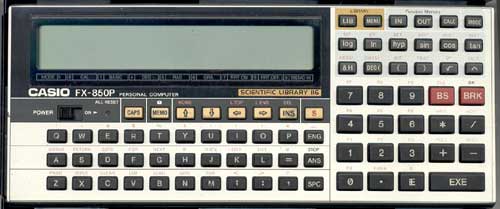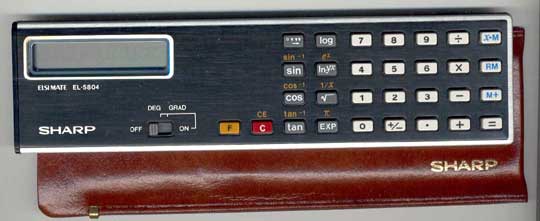There was a time when most people actually carried around checkbooks and paid for things with check! To assist with balancing your books there was Canon’s checkbook calculator, the Money Manager. It’s a real checkbook, with a holder for this neat calculator. Geared for personal banking, it has three memory banks, and quick access buttons for checks and deposits. Those of us without the Money Manager were required to use the add and subtract buttons.
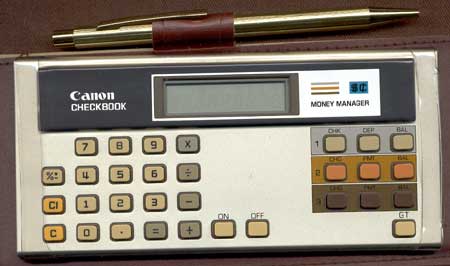
Category Archives: Magical Gadgets
Casio’s C-Programming Calculator
Wow, this one is mind-blowing. The PB-2000C was more computer than calculator: it programmed in C!! C is a powerful programming language upon which many programs are built: operating systems, web servers, word processing programs, etc. As far as we know, this is the only pocket computer capable of coding in this powerful language. The PB-2000C has 32K of RAM and a ROM card slot, allowing for expandability. Prolog and BASIC were advertised to be distributed in this format for this computer, but we haven’t seen them. There was also a slot for and additional 32K of RAM and an interface to plug the system into an MD-100 base. The base contained a 3 1/2 floppy disk drive and an RS-232C interface and a Centronics port for a printer. Absolutely incredible power in a pocket-sized form factor. Who else but Casio?
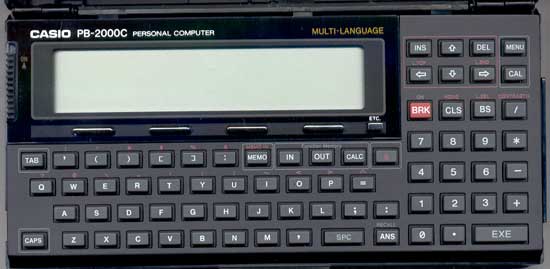
Seiko DF-1220 Expense Recorder
The Seiko DF-1220 was yet another high-priced gadget marketed for travelling execs and such. The DF-1220 Expense Recorder was part of the Pocket Logic Series and featured 8K of memory, a travel clock and calendar. Shortcut keys for typical travel expenses were handy, but we feel the tiny display limited the usefulness of this device.
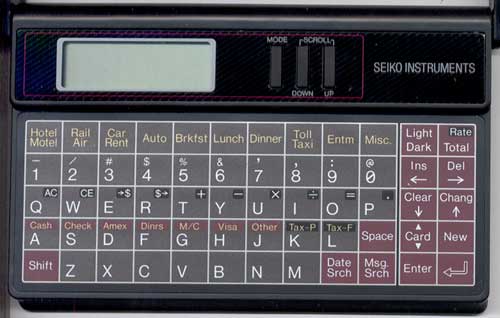
Casio Talking Calculator TA-1000
Don’t be deceived by its unassuming looks–this baby packs quite a punch, functionally speaking. In the early ’80s, Casio sought to provide a do-it-all device for the travelling businessman or busy student. The TA-1000 provides a nice calculator, a clock and a datebook of sorts (actually an array of six alarms each with a unique “chime”) in a slim and lightweight package. Take a look at the display, isn’t the day listing on the bottom pretty sweet? But you’ll agree the topper is the multiple alarm notifications which can be demonstrated by Jay here.
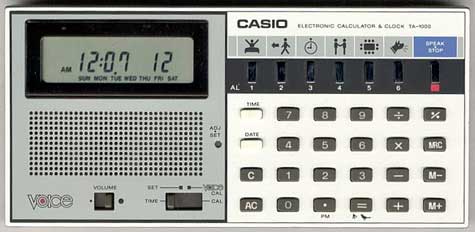
Casio FX-750P
Another feature-packed handheld computer by Casio, and this one’s expandable. The RC-4 module you see underneath packs a whopping 4K of Random Access Memory, giving you all the storage you could possibly need. Cautious programmers would probably use the card for backup purposes. This FX-750P offered two exansion slots; the FX-720P offered one. Coupled with the FA-20 mini-character printer and cassette recorder, this little thing became a formidable portable computer.
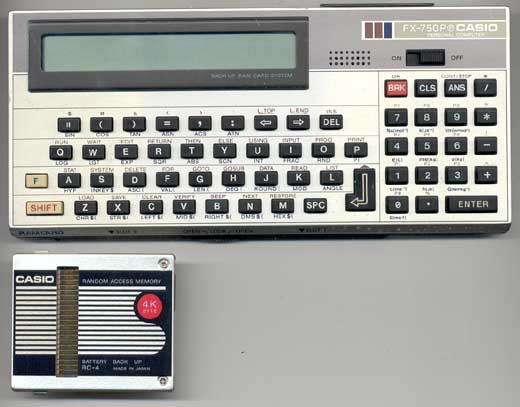
Casio PF-7000 Super Memory Computer
Yet another member of the Super Memory Computer line, this Casio PF-7000 pushes the limit in pocket calculating. We credit the dual panel construction and membrane keypad for its tiny size. But don’t let the size fool you, this dream machine has a dot matrix LCD display, can store memos and phone numbers, peform calculations and, yes, execute simple programs!
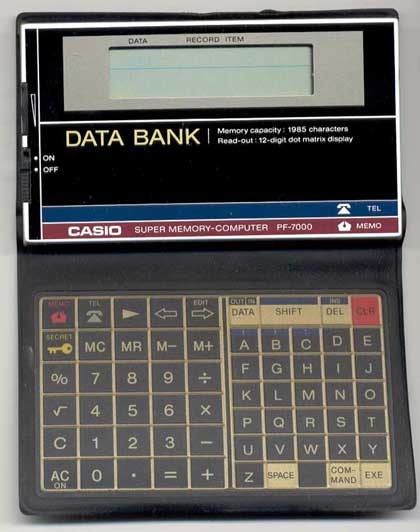
Casio PB-80 Membrane Calculator
This PB-80 is one of the more exotic Casio releases. We presume it was sold around 1985 or so. It was geared to computer novices, and lacked most of the expandability features of the other models you see here. It offer BASIC programming and data bank functionality, and the membrane keys are pretty cool, too.
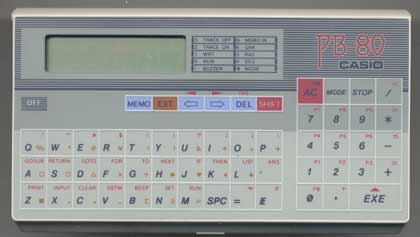
Casio FX-850P Handheld Computer
The Grandfather of Personal Data Assistants
In our opinion, this is one of the most exciting gadgets to reach the market from the Golden Age of electronics. The IF-8000 is the forefather of modern-day Personal Data Assistants, like the Palm Pilot and Visor. If offered data bank capability, date keeper, basic calculator functions and programming power. But the icing on the cake is the giant LCD touch-sensitive screen. By “writing” on the display with the pen-shaped stylus, the user can store personal memos, numbers, and even pictures in the IF-8000’s memory. The IF-8000 was very short-lived, sold briefly in 1987. We first spotted a giant box of these in a mid-town Manhattan electronics shop in the early 90’s, $10 apiece…didn’t purchase one and regretted it. Finally found another, this time at a downtown Miami electronics shop and scooped it up. Same price!


